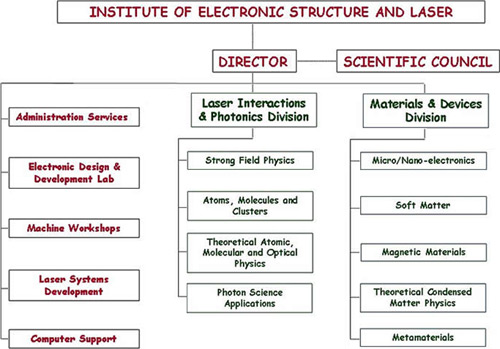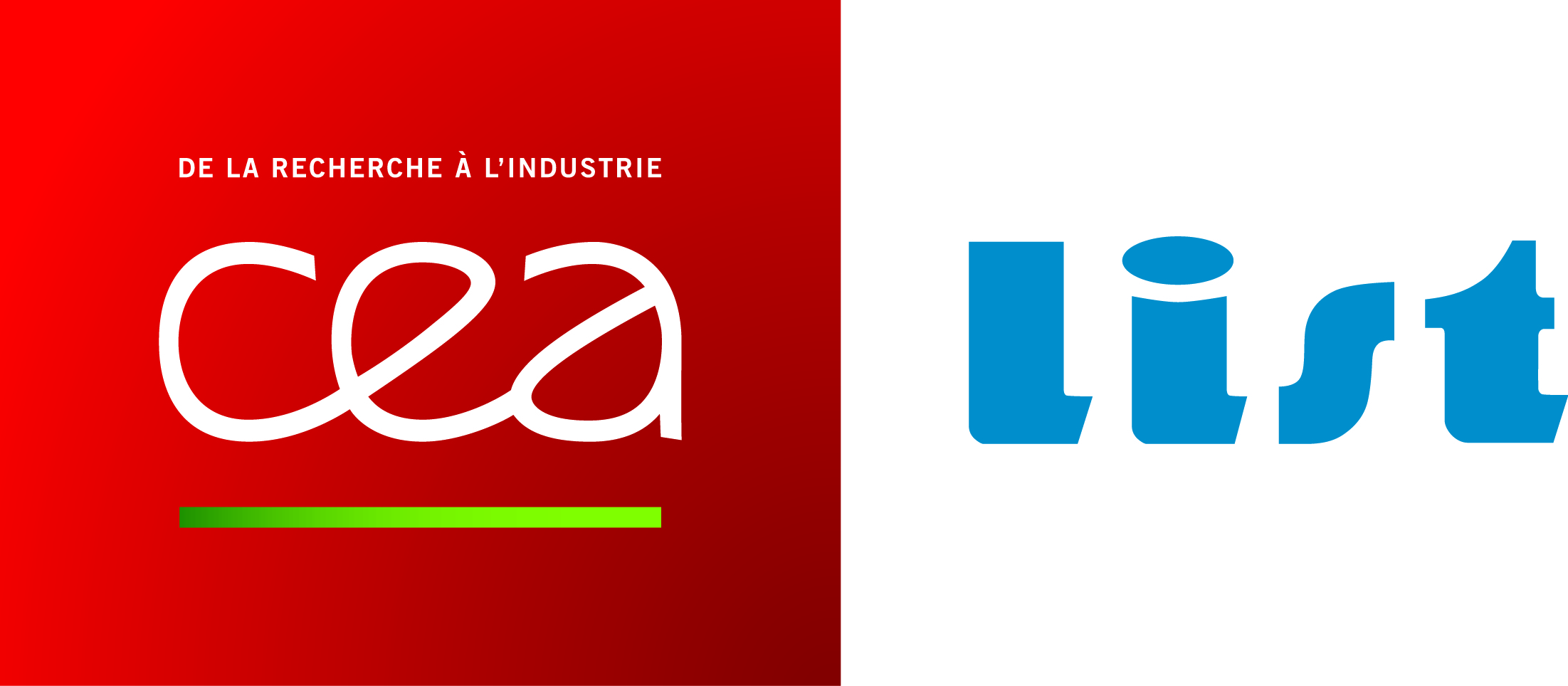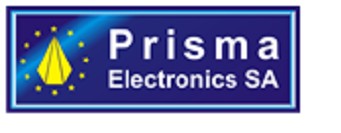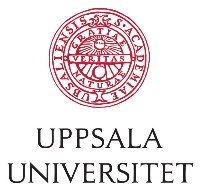Foundation for Research & Technology – Hellas (FORTH) Greece
Dr. George Konstantinidis
aek@physics.uoc.gr
Mr. Thanasis Kostopoulos
kosto@physics.uoc.gr
Partner description (non technical)
The Institute of Electronic Structure and Laser (IESL/FORTH) was established in 1983 as part of the Foundation for Research and Technology - Hellas (FORTH), also established in 1983. FORTH is one of the largest research centers in Greece with well - organized facilities and highly qualified personnel. It functions under the supervision of the General Secretariat for Research and Technology of the Hellenic Ministry of Education, Lifelong Learning and Religious Affairs and consists of seven Research Institutes located throughout Greece: Heraklion, Rethymnon, Patras and Ioannina. The research of IESL/FORTH focuses on fundamental and applied issues related to materials science and technology and laser interactions with matter.
The research activities are centred on two major areas:
- Light matter interactions and Photonic Division
- Materials and Devices Division

There is a strong interplay in research activities within the above fields with emphasis on crossing the borders between physics, chemistry and biology. Training and education through research and the exploitation of technologically mature applications are equally important priorities.
A prime activity in the Materials and Devices division is the Microelectronics Research Group (MRG) that addresses research, primarily on compound semiconductors (III-Vs, III-Nitrides and SiC) and carbon electronics with assorted infrastructure on material growth (three MBE systems in a class 1000 clean room, two sputtering systems) processing (class 1000 clean-room) and material and device characterization. IESL/FORTH possesses significant expertise in: MBE homoepitaxial (GaAs/GaAs, InGaAs/GaAs, AlGaAs/GaAs) and heteroepitaxial growth of dissimilar materials (GaAs/Si, InGaAs/Si, InGaAs/InP, SiC/Si, GaN/Al2O3, GaN/SiC, GaN/GaAs and GaN/Si), micro and nano fabrication of high frequency and high power electronic and optoelectronic devices and ICs (MESFETs, HFETs, MSM-photodetectors, MQW-modulators, and integrated optical interconnect devices, RF MEMS, MMIC's, millimeter and sub millimeter membrane supported devices, LEDs, laser diodes, polariton devices). Recently it is developing carbon based devices (CNTs and graphene).
The excellence of IESL/FORTH is highlighted by events like the candidency for the 2002 Descartes prize for its work on RF MEMS or references to its work in international journals like Compound Semiconductor (July 2002, March 2003). In 2005 FORTH was among the winners of the Descartes prize for its work on left-handed materials.
Description of the background (technical)
MRG’s GaN and related compounds technology advanced through 6 EU projects (“QN laser I”, “QN laser II”, “GaNANO”, “AMICOM”, “ULTRAGAN”, “MORGAN”) and 2 major national projects. MRG possesses the experience to produce III-nitride material as well as to fabricate microwave devices like HEMTs. Additionally, MRG has developed micromachining technologies to produce state of the art SAWs, FBARs, LAMB type biosensors, CHEMFETs and UV photodetectors. The following list of recent selected publications reflects this background.
Muller, D. Neculoiu, G. Konstantinidis, G. Deligeorgis, A. Dinescu, A. Stavrinidis, A. Cismaru, M. Dragoman, A. Stefanescu, “SAW devices manufactured on GaN/Si for frequencies beyond 5GHz”, In press IEEE Electron Device Letters
M.Dragoman, D.Neculoiu, D.Dragoman, G.Deligeorgis, G.Konstantinidis, A. Cismaru,F. Coccetti, R.Plana, “ Microwave applications on graphene”, IEEE Microwave Magazine, vol.11,pp.81-86 (2010).
A.K. Pantazis, E. Gizeli, G. Konstantinidis, “A high frequency GaN Lamb-wave sensor device, Appl. Phys. Lett. 96, 194103 (2010)
D. Neculoiu, A. Muller, G. D. Deligeorgis, A. Dinescu, A. Stavrinidis, D. Vaschilache, A. Cismaru, G.E. Stan, G. Konstantinidis, “AlN on silicon based surface acoustic wave resonators operating at 5 GHz”, Electronic Letters 45, 1196 (2009)
A. Muller, G. Konstantinidis, M. Dragoman, D. Neculoiu, A. Dinescu, M. Androulidaki, M. Kayiambaki, A. Stavrinidis, D. Vaschilache, C. Buiculescu, I. Petrini, A. Kostopoulos, D. Dascalu, “GaN membrane supported UV photodetectors fabricated using nanolithographic processes”, Microelectronics Journal 40, 319, (2009)
A. Muller, D. Neculoiu, D. Vaschlache, A. Cismaru, M. Danila, M. Dragoman, G. Konstantinidis, A. Stavrinidis, G. Deligeorgis, K. Tsagaraki, “6.3 GHz film bulk acoustic resonator structures based on a gallium nitride/silicon thin membrane”, IEEE Electron Device Letters 30, Vol.8, 799, (2009)
A. Adikimenakis, K.E. Aretouli, E. Iliopoulos, A. Kostopoulos, K. Tsagaraki, G. Konstantinidis, A. Georgakilas, “High electron mobility transistors based on the AlN/GaN heterojunction”, Microelectronics Engineering, 86, 1071 (2009)
Y. Alifragis, A. Volosirakis, N. A. Chaniotakis, G. Konstantinidis, A. Adikimenakis, A. Georgakilas, “Potassium selective chemically modified field effect transistors based on AlGaN/GaN two-dimensional electron gas heterostructures”, BIOSENSORS AND BIOELECTRONICS 22 (2007), 2796–2801
E. Dimakis, E. Iliopoulos, M. Kayiambaki, K. Tsagaraki, A. Kostopoulos, G. Konstantinidis, and A. Georgakilas, “Growth Optimization of an Electron Confining InN/GaN Quantum Well Heterostructure”, Journal of ELECTRONIC MATERIALS, Vol. 36, No. 4, (2007), 373-377
F. G. Kalaitzakis, N. T. Pelekanos, P. Prystawko, M. Leszczynski, G. Konstantinidis, “Low resistance as-deposited Cr/Au contacts on p-type GaN”, APPLIED PHYSICS LETTERS 91, 261103 , (2007)
Y. Alifragis, A. Volosirakisa, N.A. Chaniotakis, G. Konstantinidis, E.iliopoulos, A. Georgakilas”, “AlGaN/GaN high electron mobility transistor sensor sensitive to ammonium ions”, PHYS. STAT.SOL (a) 204, No.6, 2059 (2007)
J. Kuzmik, J.-F. Carlin, M. Gonschorek, A. Kostopoulos, G. Konstantinidis, G. Pozzovivo, S. Golka, A. Georgakilas, N. Grandjean, G. Strasser and D. Pogany
“Gate-lag and drai-lag effects in (GaN)/InAlN/GaN and InAlN/AlN/GaN HEMTs”
PHYS. STAT.SOL (a) 204, No.6, 2019 (2007)














